AIR WATER SYRINGE
The air water syringe is one of the few dental devices used on every patient for every procedure.
The two basic functions for this device is irrigating and drying. Seems like a harmless device, right? Wrong. The syringe possesses a design flaw that has remained unaddressed for over 40 years. The simplicity of this device has led many dentists, orthodontists, and hygienists to underestimate the risks of dental cross-contamination. These risks are present in many of the current models or designs. In the USA, there are two versions of the air water syringe. Remarkably, these two syringes have remained unchanged for over 40 years. Four decades is a substantial period for an air water syringe to remain relevant without any enhanced features. Times change, technology advances, and science introduces new ideas for enhancing safety. Despite these technological and scientific advancements, there has been no modification to a device used in all dental procedures.
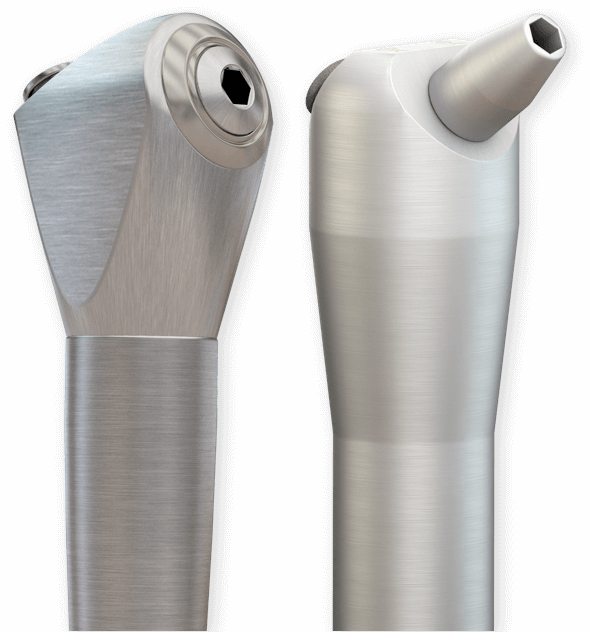
What Is The One Device That Is Used On Every Patient, For Every Procedure, But Never Heat Sterilized?
THE AIR WATER SYRINGE!

That's correct. This simple device is never sterilized. Once a 3 way syringe is attached to the chair delivery system, it remains in place without ever being removed. For 10, 15, or even 20 years, this device may be used on patients without ever undergoing heat sterilization.
What does this imply? It suggests that thousands of patients received treatment with an air/water syringe that was never sterilized. How is this possible? While most dental devices attached to the chair system can be removed for sterilization, this device cannot. It's astonishing to think that even after 40 years of scientific and technological advancements, this issue persists. However, it does, and this should be a cause for significant concern for you and your family. Despite significant progress in developing safer dental devices, archaic 3 way syringes continue to be neglected.
When will the field of dentistry recognize and acknowledge the inherent flaws associated with the air/water syringe?
Next time at the dental office...
Ask Your Dentist or Hygienist Why They Have Not Upgraded in 30+ years.
Each of the syringes shown below should evoke concern for you and your family. If you encounter these devices in a dentist's or orthodontist's office, you can be sure that they have never undergone a sterilization process.
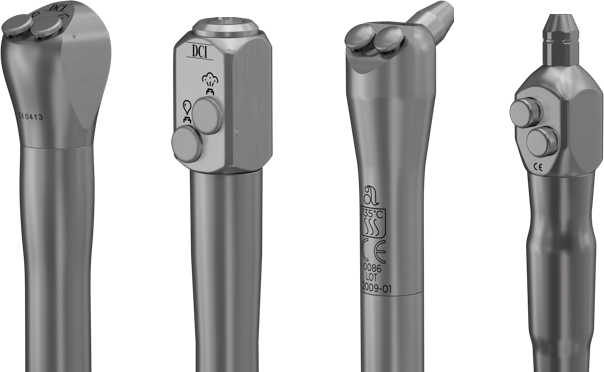

Do You Know How Hygienists Currently Clean Their Air Water Syringe?
DISINFECTING WIPES
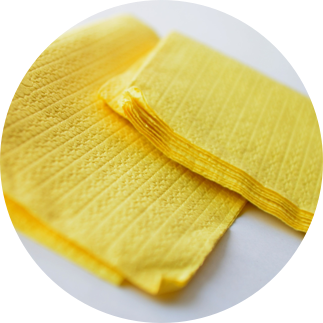
The majority of dental offices clean with a simple disinfecting wipe.
After blood, tissue, and contaminated aerosol sprays onto the syringe from one patient's treatment, a hygienist simply wipes down the syringe with a disinfecting wipe. Following this quick wipe down, the next patient is brought in, and the next treatment begins. The problem with this procedure is that there are cavities in the syringe that cannot be cleaned by a simple wipe down. Additionally, the aerosolized sprayback also reaches the internal parts of the air-water syringe. These parts are neither removed for inspection nor wiped down. Nevertheless, this has become the standard cleaning protocol for an air water syringe.
Would you feel safe knowing that this device had not undergone proper cleaning for ten years' worth of patients? How would you feel if a high-risk patient was treated just before you? Would you still accept your treatment?
A dentist, orthodontist, and hygienist simply lack the time to thoroughly clean the syringe between patients.
BARRIER
SLEEVES
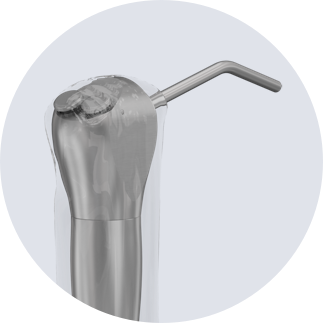
The other protective measure that is most commonly used for dental infection control are barrier sleeves. These sleeves are put over the device as a protective barrier from the splash back and contaminated aerosol.
Dentists, orthodontists, and hygienists commonly believe that using barrier sleeves makes air water syringes contamination-free. However, the reality is different; removing barrier sleeves without contaminating the syringe is impossible as they extend beneath the syringe holder. To remove them, one must use a gloved hand, thus risking contamination. Moreover, barrier sleeves have a slit for inserting tips, allowing debris like blood, saliva, and tissue to potentially enter the sleeve, increasing the risk of contamination. Changing gloves frequently to prevent contamination is often impractical in dental practice.
As you can see, barrier sleeves create a false sense of safety. However, do dentists, orthodontists, and hygienists genuinely believe this is practicing safe dentistry?
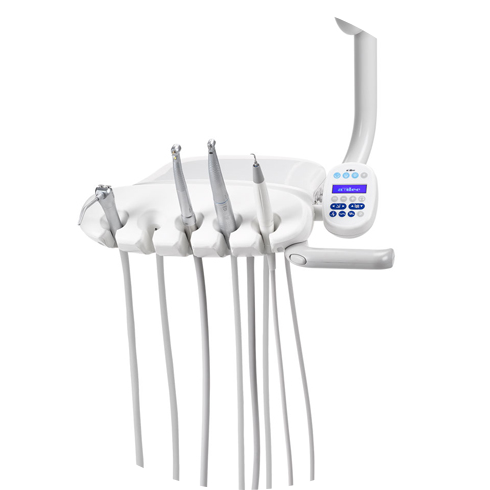
TIME CONSTRAINTS
The overall absence of appropriate sterilization protocols for an item used on every patient is a frightening reality.
Manufacturers provide manuals on how to clean a syringe, but due to the intricate steps required, most offices perform a simple wipe and consider it sufficient. Dentists, orthodontists, or hygienists often find it impossible to allocate the necessary time to follow the manufacturers' recommended cleaning steps. The time constraints associated with seeing the next patient do not permit the completion of the necessary cleaning steps. When you cannot remove an air water syringe and cannot adhere to the manufacturer’s cleaning methods, you begin to understand the root of the problem.
DID YOU KNOW?
Every handpiece attached to the dental chair can be removed and sterilized, with the exception of an air water syringe.
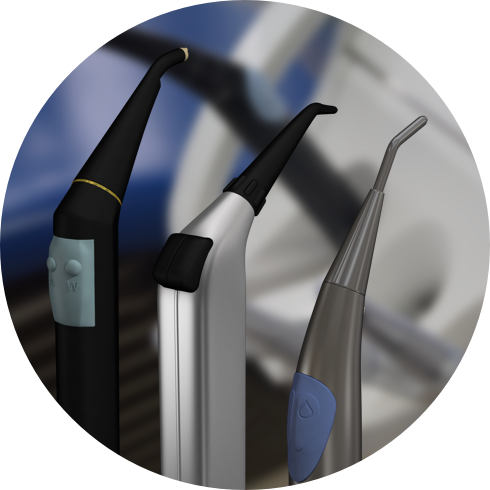
LACK OF TRANSPARENCY
Now let's go back a step. Some syringes have been designed to include a safety feature to remove the head of the syringe or the outer sleeve to be sterilized. The problem is, a dentist, orthodontist, and hygienist are not aware their device has this safety feature.
What good is a safety feature if the companies that manufacture and sell the product do not provide proper instruction or information to dentists, orthodontists, or hygienists on how to use it? Furthermore, the necessary items to make the safety feature effective are often categorized as optional. This is when it becomes clear why many offices, even if they are aware of the syringe's safety feature, still do not implement it—simply put, it involves costs. To maintain a safe air water syringe, offices must have a minimum of ten replacement sleeves or heads to switch out between patients in each surgery. The manufacturer contributes to the problem by labeling these items as optional for the distributor, who, in turn, leads dentists, orthodontists, and hygienists to believe that these optional parts are unnecessary for daily operations.
It's an industry problem that requires an immediate solution. If a component enhances the safety of an air water syringe, it should be a standard feature, not an option.

OPTIONAL EQUIPMENT?
Let's provide an example of how this sounds. You and your family visit a car dealership to purchase a car. You find the car you like, but it is a little too expensive. So, to save money, you request the dealership to remove the airbags and seatbelts. These are optional safety features, right?
Manufacturers have portrayed their safety add-ons as optional, but they should educate dentists, orthodontists, and hygienists about the increased safety these parts can provide for an air water syringe. This education should also include information on how it can reduce risks and enhance protection for both patients and staff. However, the disconnect between manufacturers, dental distributors, and dental offices has led to a lack of understanding required for the proper sterilization of an air water syringe. When items are labeled as optional, offices tend to perceive them as unnecessary perks.
When it comes to the safety of you or your family, safety should not be optional; it should be a standard practice.

WORKING WITH A BUDGET
Money in the majority of dental offices is very tight and a dentist, orthodontist and hygienist are trained to watch what they spend.
Due to restricted budgets, offices typically purchase only the necessary items for their daily tasks and duties. Spending money on optional equipment that is not considered a necessity is very rare. You might be surprised at the measures certain dental offices take to cut costs. There have been cases where dentists, orthodontists, and hygienists reused latex gloves, as well as disposable air water syringe tips, matrix bands, saliva ejectors, and many other items in an attempt to reduce their expenses. These "shortcuts" lead to risky dental procedures that could potentially harm patients. This risky behavior arises from the professionals trying to work within a tight budget.
When offices attempt to cut costs, what other safety items do they consider unnecessary?
CURRENT AIR WATER SYRINGE SYSTEMS ARE FLAWED
Why Can’t a Dentist Just Remove Their Current Air Water Syringe?
If a dental office were using one of the syringes shown at the beginning of this page, they would need to follow these steps after treating each patient.
Do you think this 14-step process is practical in a busy dental office?
The answer is no. A standard dental office is very busy. After one patient is treated, the next patient is seen. Implementing this process would require the office to invest valuable treatment time and money, potentially limiting the number of patients they could see in a day.
Do you think a dentist, orthodontist, or hygienist have enough replacement air water syringes to accommodate sterilizing their air water syringe between patients?
The answer is no. A standard syringe costs anywhere from $250 to $2500. Each surgery would require at least 10 spare syringes to make the sterilization process feasible. In reality, the majority of dental offices have zero spare syringes. Without spare syringes, an office cannot complete a sterilization process. Unless they wait hours between each patient, which is not practical, an office cannot claim that their current syringes are clean.

Air Water Syringe Awareness
We, at Dentistry’s Dirty Secret, are alerting the public to this issue to increase awareness that the air/water syringe conceals significantly underreported risks.
Dentists, orthodontists, and hygienists do not inform patients about these risks, which violates informed consent. As a patient, you lack the means to learn about these inherent risks, and most dental professionals are also unaware of them. Our goal is to fill the information gap required for you to gain knowledge about the undisclosed risks when visiting a dental office.
The 3 way syringe is only half the problem. Metal air water syringe tips, which dentists insert into the syringe, also present numerous infection control issues.


